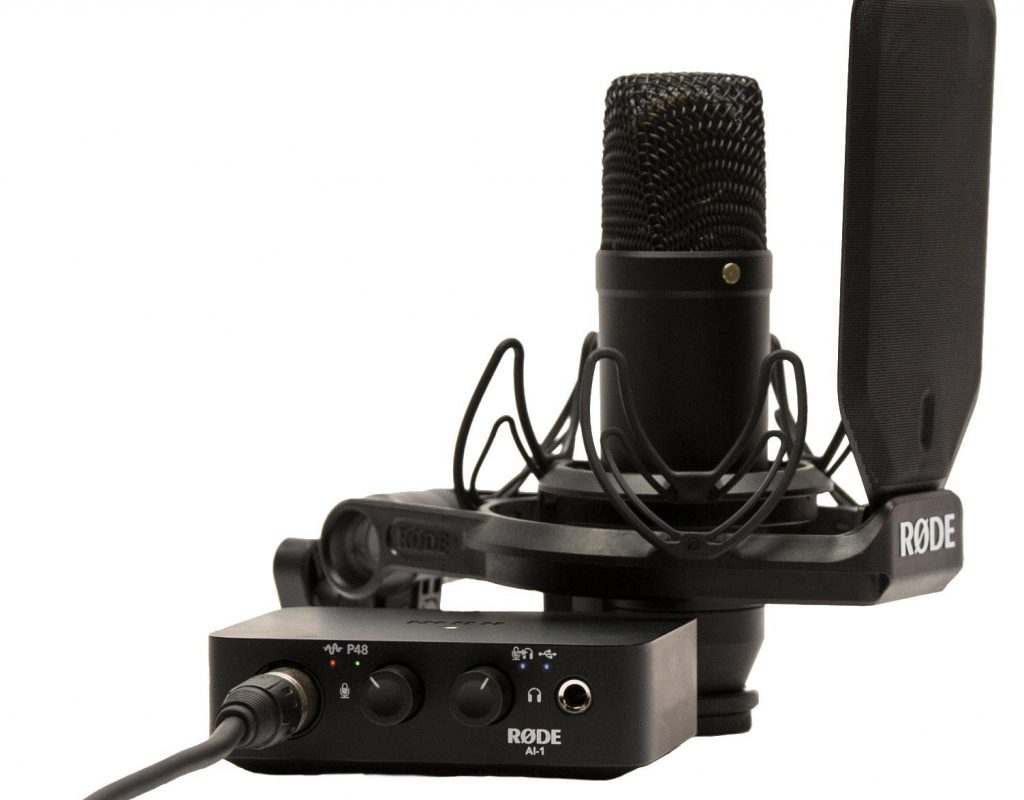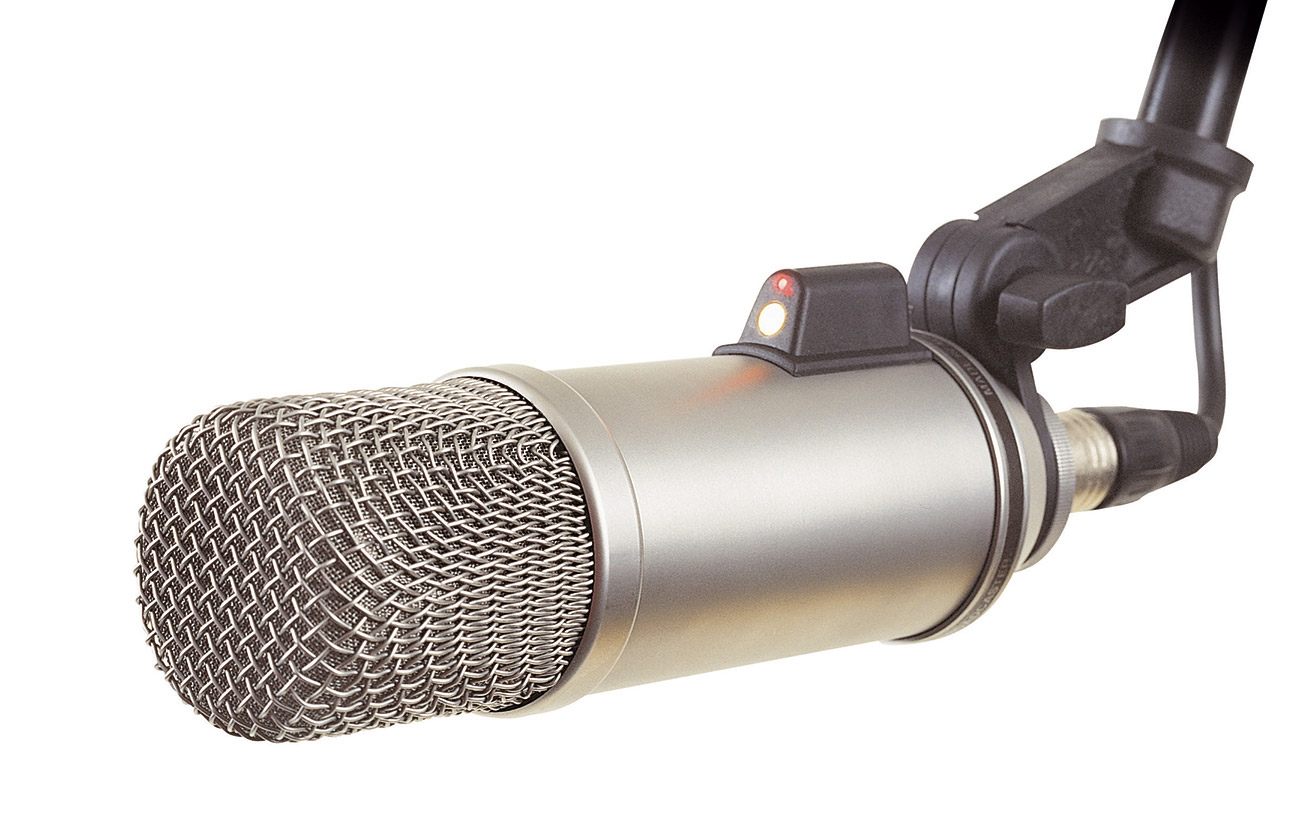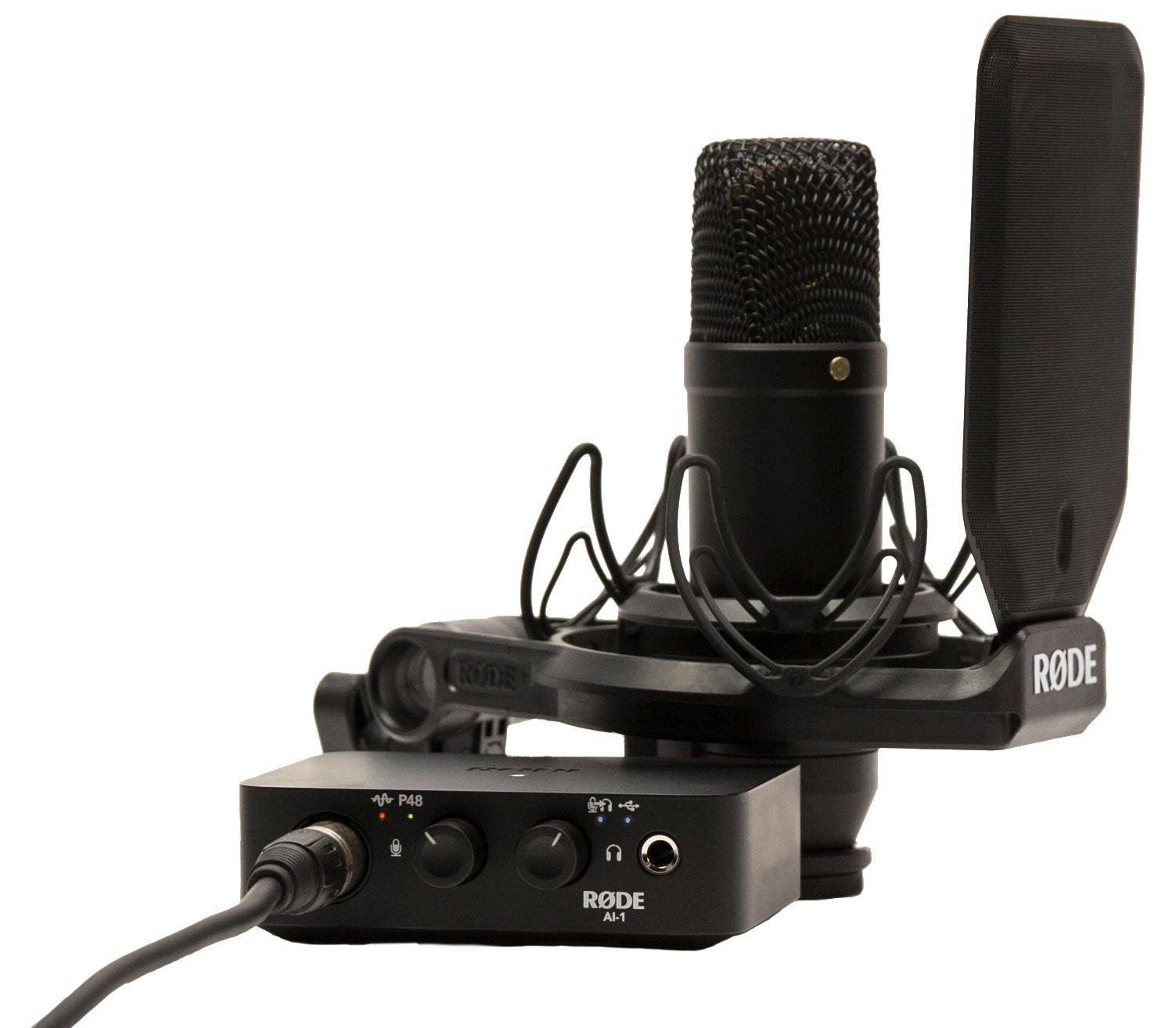
Here is my review of the black-colored, high-end RØDE NT1 analog electret condenser studio microphone, together with its matching shockmount and pop filter, not to be confused with the similarly named NT-USB or NT1A from the same Australian manufacturer. This article review will include a test recording of the side-addressed NT1 compared with the end-addressed RØDE Broadcaster I reviewed recently. I’ve also included a sneak preview of the new RØDE AI-1 interface (preamp and A-to-D converter) from RØDE, which I’ll review soon.
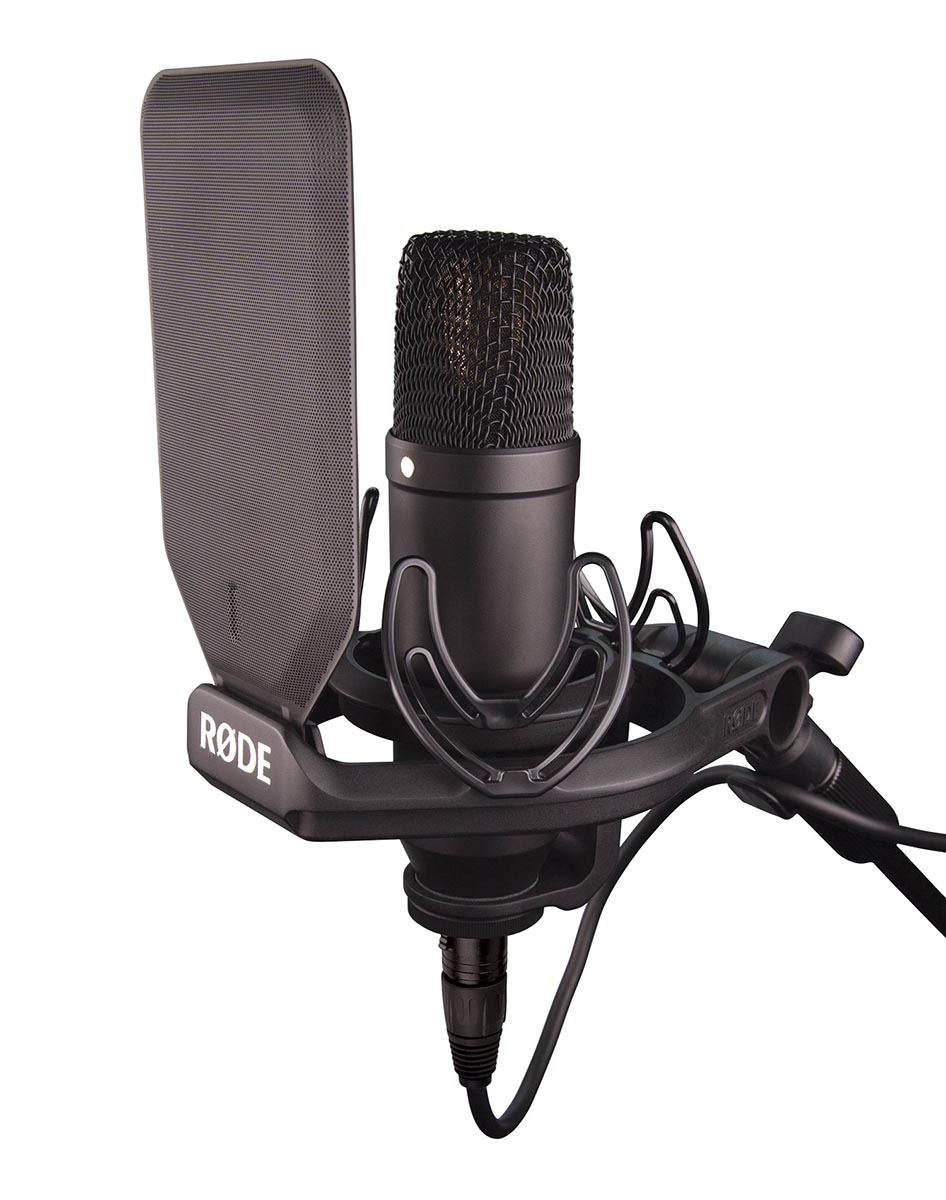
The NT1 certainly lives up to its reputation of being extremely well built and sounding smooth. The below test recordings were made at the 48 kHz audio-for video standard at about -12dB and later leveled to -16 LUFS. Both were made in the same non-treated room, and both are uploaded as uncompressed WAV. No equalization is applied. I recommend listening with WiFi unless you have an unmetered data connection with your mobile service.
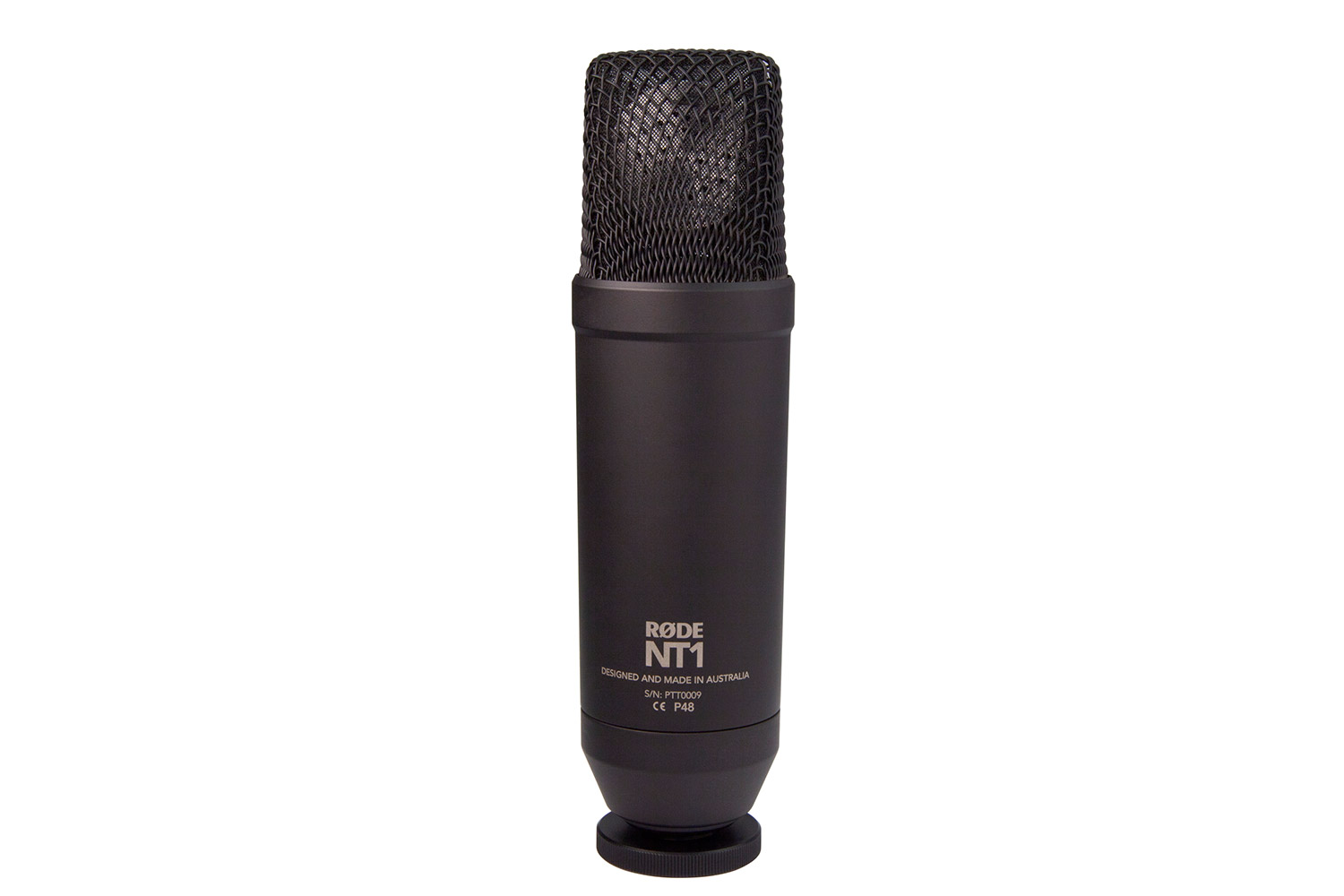
RØDE NT1 recording
Audio PlayerRØDE Broadcaster recording
Audio PlayerBoth recordings were made via the new AI-1 RØDE preamp/A-to-D (analog-to-digital) converter which I’ll be reviewing soon.
Similarities
Both microphones are:
- Electret condenser
- 1” capsule
- Require phantom power (24 or 48 volts)
- Cardioid (heart shaped) pickup pattern.
- 20Hz to 20kHz frequency response, although they are bit equalized a bit differently, as you’ll see in the next section.
Differences and conclusions
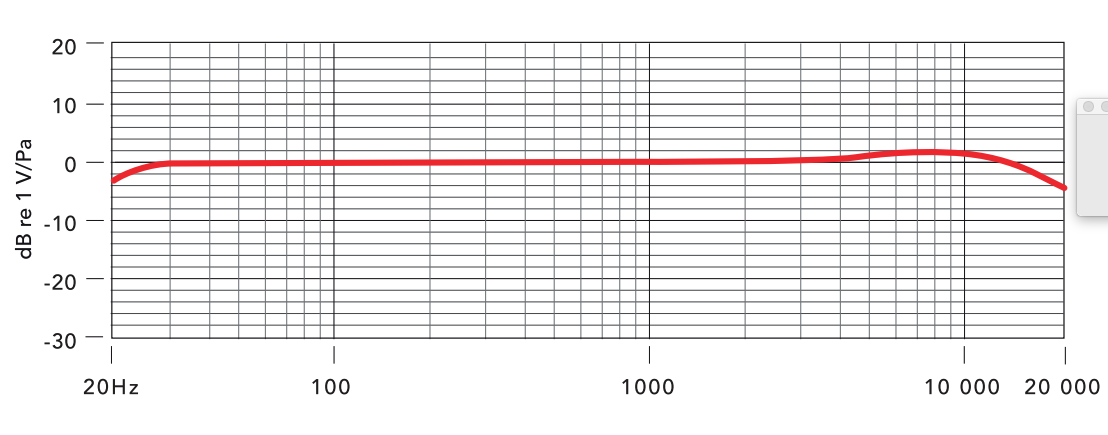
Frequency response of the RØDE NT1, above, nearly completely flat
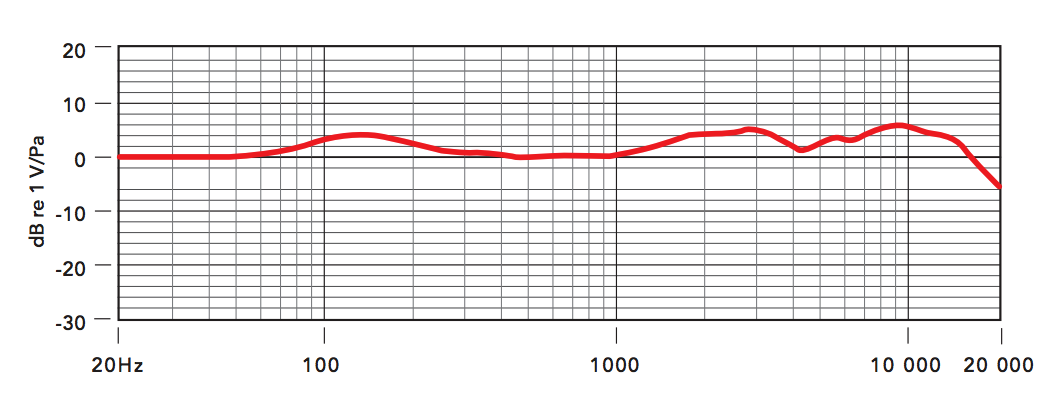
Frequency response of the RØDE Broadcaster, above, more pre-tailored for the human voice
While the RØDE NT1 is side-addressed, the RØDE Broadcaster is end-addressed like most dynamic microphones.
The RØDE Broadcaster has two features not included in the RØDE NT1: a low cut/high pass filter to combat rumble from air conditioners, etc. and a tally light (covered in more detail in my RØDE Broadcaster review).
The RØDE NT1 is marketed for both musical instruments and the human voice, while the RØDE Broadcaster is marketed for “broadcasting”, i.e. radio and TV, together with their modern derivatives.
The NT1 has a published sensitivity of -29.0dB, while the Broadcaster is listed as -34.0dB. That is a relatively small difference. Both are much less gain hungry than most dynamic microphones and therefore can be used with preamps that don’t offer so much gain as most dynamic microphones demand.
The RØDE NT1 microphone is available two different ways (so far):
- RØDE NT1 with the shockmount and pop filter (±US$269, Amazon — B&H)
- RØDE NT1 bundled with the shockmount, pop filter and the new AI-1 RØDE preamp/A-to-D (analog-to-digital) interface (US$349, B&H)
For comparison, the RØDE Broadcast microphone (reviewed here) is ±US$419 (Amazon — B&H) and the RØDE official WS2 windscreen is ±US$20 (B&H).
From an visual esthetic perspective, I believe that each one of these two microphones fit their targeted market: The NT1 looks like a cool studio microphone for musicians, while the Broadcaster looks like it belongs in highest-level radio and TV (and their modern derivatives). That doesn’t mean that each one can’t be used in the other environment. At this price level, all microphones are good, and there are many subjective opinions, just as there are with our taste in music and talk radio. Both RØDE microphones offer a 10-year warranty after registration.
Upcoming articles, reviews, radio shows, books and seminars/webinars
Stand by for upcoming articles, reviews, and books. Sign up to my free mailing list by clicking here. Most of my current books are at books.AllanTepper.com, and my personal website is AllanTepper.com.
Si deseas suscribirte a mi lista en castellano, visita aquí. Si prefieres, puedes suscribirte a ambas listas (castellano e inglés).
Listen to his CapicúaFM show at CapicúaFM.com or subscribe via Apple Podcasts, Radio Public or Stitcher.
Save US$20 on Project Fi, Google’s mobile telephony and data
Click here to save US$20 on Project Fi, Google’s mobile telephone and data service which I have covered in these articles.
Learn to speak Castilian, the most widely used Spanish language
FTC disclosure
No manufacturer is specifically paying Allan Tépper or TecnoTur LLC to write this article or the mentioned books. Some of the other manufacturers listed above have contracted Tépper and/or TecnoTur LLC to carry out consulting and/or translations/localizations/transcreations. Many of the manufacturers listed above have sent Allan Tépper review units, including RØDE. So far, none of the manufacturers listed above is/are sponsors of the TecnoTur programs, although they are welcome to do so, and some are, may be (or may have been) sponsors of ProVideo Coalition magazine. Some links to third parties listed in this article and/or on this web page may indirectly benefit TecnoTur LLC via affiliate programs. Allan Tépper’s opinions are his own.
Copyright and use of this article
The articles contained in the TecnoTur channel in ProVideo Coalition magazine are copyright Allan Tépper/TecnoTur LLC, except where otherwise attributed. Unauthorized use is prohibited without prior approval, except for short quotes which link back to this page, which are encouraged!

Filmtools
Filmmakers go-to destination for pre-production, production & post production equipment!
Shop Now